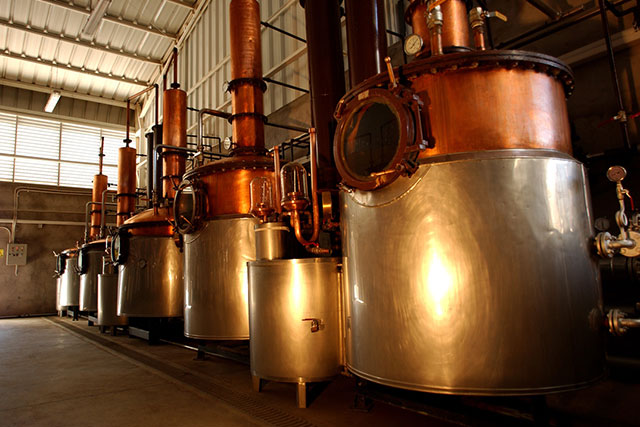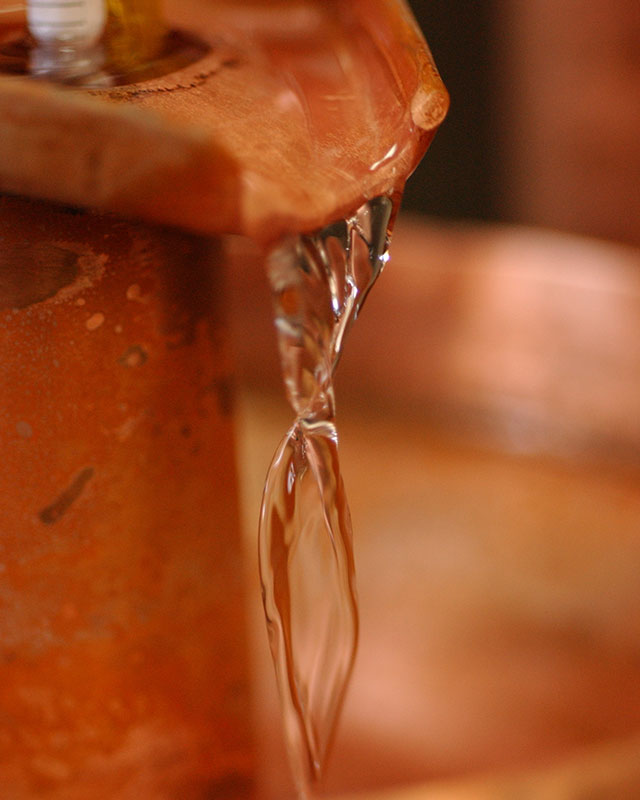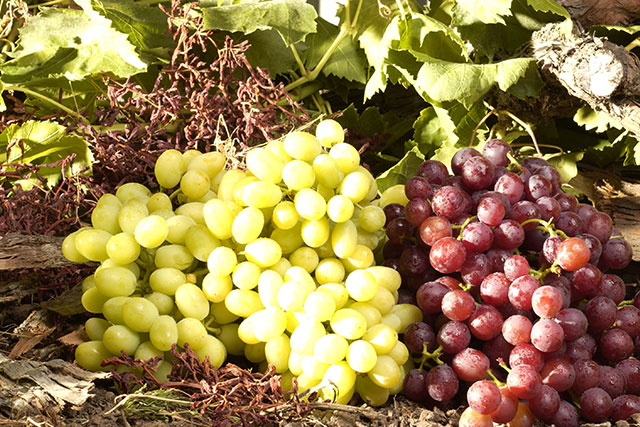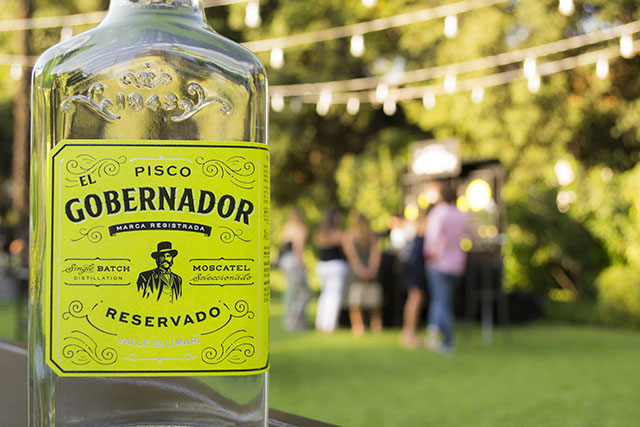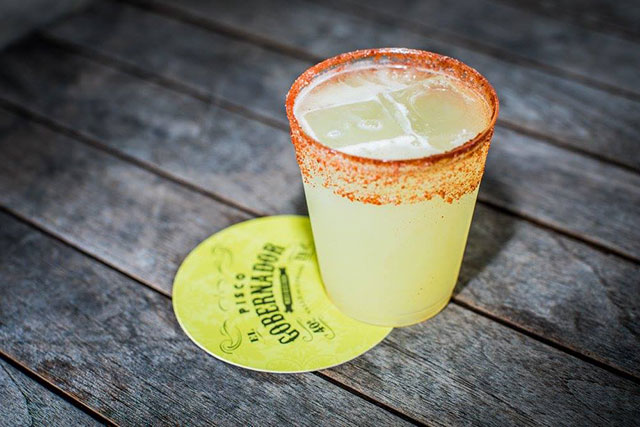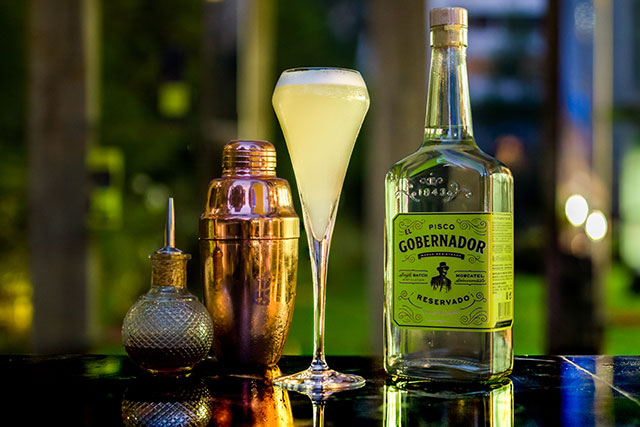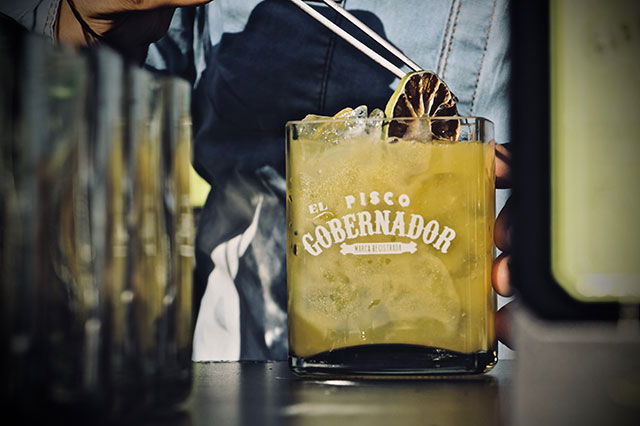Chances are, if you’ve been out to bars and restaurants lately, you’ve been seeing Pisco pop up more and more on menus and in creative cocktails. And while the Pisco Sour is often the drink that most are familiar with, it’s time to learn a bit more about Chilean Pisco, a truly unique, versatile and delightful spirit.
Not to be confused with Peruvian Pisco – the two spirits have a long and storied history, with each claiming to have been the very first produced – the version from Chile is, in fact, very different. A grape-based spirit, Chilean Pisco is made in only two regions of the country – the Atacama and Coquimbo regions in the north – where the climate is low-humidity and the terrain desert-like. This, of course, has a major effect on the final product and brands like El Gobernador.
“One of the main differences between Chilean and Peruvian pisco flavor comes from the different grapes that are used in each country’s Pisco making process,” explains Adriana Soley Fuster, the USA Spirits Area Manager for Miguel Torres, under which Pisco El Gobernador is produced. In Chile, the grapes used are both aromatic – moscatel de alejandría, moscatel rosada and torontel – as well as non-aromatic (Pedro Jiménez and Moscatel de Austria).
Chilean pisco is generally produced using discontinuous distillation. Some versions of Chilean Pisco, like brandy, can be aged (Peruvian Pisco can not be aged), often in barrels made from American oak, French oak or Rauli, an evergreen beech tree native to Chile. The biggest difference between the Chilean and Peruvian varieties, however, is found in the distillation process. After distillation, Chilean piscos add water to lower the ABV while, in Peru, none is added to achieve a lower proof. Like other categories in the brandy family, the water added must be pure, with no sugar, coloring or other additives.
In the end, Chilean pisco is generally a fruity and floral spirit, ideal for enjoying neat or mixing into elevated cocktails.
“Chilean pisco is not a neutral spirit,” says David Wondrich, cocktail historian and Senior Drinks Editor at The Daily Beast. “Chilean and Peruvian pisco actually share a lot of the same DNA.”
Let’s get to know a bit more about Chilean Pisco, shall we?
Chilean Pisco Uses a Discontinuous Distilling System
There are lots of things that make Chilean pisco super special and unique including the discontinous distillation system. “The process in Chilean Pisco distillation is a discontinuous potstill distillation, always cutting heads, hearts and feints, or foreshots,” explains Fernando Almeda, Technical Director of Miguel Torres Chile. “The main difference with Peruvian Pisco is that we discard the feints, only keeping the hearts, which are high proofed; they are rectified using pure water only.”
And while multiple distillation is often used with Chilean pisco, it’s not required. “There are some triple distillation piscos around, which makes no difference when we are talking about quality,” says Almeda. “Pisco El Gobernador won the double gold medal in San Francisco World Spirits Competition and is a single distillation pisco. Another difference is that we can age pisco, using any kind of barrel that we like, which gives another complex profile.”
The choice to distill – or not – most defintiely has a major effect on the final product, explains Johnny Livanos, General Manager and Beverage Director for Ouisa, part of the Livanos Restaurant Group. “You also have the option to distill the pisco once or multiple times, depending on the final product. For example, if the master distiller is going to produce a blanco pisco, they may only distill the pisco once to preserve a lot of the aroma and flavors, but if they are going to age it in a barrel, they will distill it twice to allow the barrel flavors to shine.
Adds Maxime Belfand of NYC’s Saxone + Parole: “Chilean Pisco must be distilled in an alembique, can be distilled once or multiple times depending on the style that the master distiller is seeking (aged or non-aged Pisco). Also, Chilean Pisco aging uses three main types of wood which makes it so unique compared to Peruvian pisco that cannot be aged.”
“The neat or interesting thing about production of Chilean Pisco (other than different grapes, growing region and climate, distillation style) is the “hand of the distiller,” meaning the distiller has a larger role in obtaining the final product,” says Lucas Wilde, Beverage Manager of New York’s Vida Verde. “First off, they are able to distill more than once, affecting the purity of the product, easing the flavors sometimes for a more palatable product.”
Beverage Consultant and Speed Rack co-founder Lynnette Marrero adds: “The style of distillation and the addition of water to bring to proof can open up some of the aromas. The distillation can also be tailored to the grape blend. The distillation style of the master can be fine tuned since the blender can distill as many times as they choose for their profile.”
Distillers, Wilde continues, are also allowed to blend their brandies creating a wider and more refined flavor profile. “For example, the distiller could blend a single distilled pisco with a double distilled pisco and even a third distilled pisco, varying the percentages very similar to wine production. Chilean Pisco is also allowed to be aged where Peruvian Pisco is not, allowing for much more and different flavors and aromas to be seen.”
The Grapes Are Extra Special
There’s no denying that a lot of the awesomeness of Chilean pisco somes directly from the grapes used.
“We have 5 different valleys to grow pisco grapes, and they are totally diferent from one other,” explains Cristobal Cofre, Global Brand Ambasador for Pisco El Gobernador. “Just as an example, Elqui is the nearest to the sea so it has some influence on the grapes, while Limari is closest to the Cordillera mountains so it has a different set of aromas and flavors.”
According to Cofre, “the grapes in Chile grow in a fantastic way because the low humidity and semi-desert climate helps to concentrate the sugar content into the grape, allowing the fermentation to be successful later on – less water makes acidic soil, sweeter grapes, more alcoholic wines, and better piscos.”
DeeAnn Quinones, Principal Bartender at Employees Only in Los Angeles adds, “The combined grapes of the Pink Muscat and the Muscat of Alexandria lend an exquisite floral nose to the spirit and, as any wine lover knows, the quality of the grapes come from the terroir!”
It’s a sentiment shared by Corey Creason, Bar Manager at Bar SixtyFive at Rainbow Room in NYC. “Climate, as a part of terroir as a whole, is one of the most important contributing factors to the final distillate. Areas like Chile that experience low humidity and high temperatures generally produce grapes with a strong presence of tannin and an almost sticky-sweet ripeness. For pisco, this means some of the most deliciously burly expressions of tropical fruit and luscious citrus.”
The grape quality and type most definitely makes all the difference, says Livanos. “Chilean pisco uses only aromatic grapes, such as the Moscatel varieties, which give a more floral and lively flavor to the pisco. I think the style of grapes and distillation process allows for a wider array of flavors in Chilean pisco vs Peruvian pisco.”
And the dry, arid climate is certainly to thank. “Just like with wine, harsh and dry conditions allow the grapes to have a higher concentration of flavor,” say Livanos. “The less water that is in the grapes, the more sugar and flavors that are available in the final juice. This is one of the contributing factors of the flavor of Chilean pisco. It is so aromatic and fruity, which I think is largely due to the dry growing conditions.”
The Flavors Are Floral and Fruity
There’s no denying that the quality of the grapes has a major influence on the flavors of Chilean pisco. Some Chilean piscos made with lesser ingredients can be a bit funky and less refined, but “high quality Chilean piscos like El Gobernador are very smooth, elegant and floral, with hints of jasmine and green pears,” says Soley Fuster. “You can definitely feel the grapes flavor as well, which comes from the white wine that was distilled from.”
Adds Wondrich: “The delicate Chilean piscos are a little softer and more subtle than a kick-ass flavor. The richest ones are soft and floral, kind of creamy and quite lovely.”
The floral and fruit-forward flavors and aromas help give Chilean pisco its delightful and unique profile. “I love how Chilean pisco has a powerful bouquet of aromas from the second you pop open the bottle,” Livanos says. “It screams fruit and floral notes at you! There is no other spirit that is as botanical as Chilean pisco without actually using botanicals. It is also very smooth, so you are left with something that is full of life and flavor and is also quite easy to drink.”
Many grape-based spirits, like grappa or cognac, Livanos reveals, have similar qualities but are not as soft on the palette. “Chilean pisco is full of flavor, but is so gentle when you take a sip.”
Chilean Pisco Works Great In Cocktails
Sure, most people are most familiar with the classic Chilean Pisco Sour cocktail, with Chilean pisco, lime juice, sugar and ice (unlike the Peruvian version, the Chilean Pisco Sour uses no egg whites or bitters).
“I love pisco like I love my cognacs: neat,” admits Saxon + Parole’s Belfand. “But when it comes to cocktails, I’ve always been a huge fan of sour in general; I really like to make them and drink them. The Pisco Sour is to me the best of them all.”
For Bar SixtyFive’s Creason, it’s a tough decision. “The aging process is so unique in Chilean Pisco, which makes it an exceptionally versatile spirit that can be enjoyed a myriad of different ways and I would be hard pressed to choose between a well-made Pisco Sour or a good reserve served over a large cube.”
To get the full flavors and aromas of Chilean pisco, Vide Verde’s Wilde also likes it straight. I always drink spirits neat first, to understand where the product is from and where you can take it. In cocktails I like to split the spirits and Chilean pisco always goes well with Tequila. The Pisco Sour is ubiquitous with Pisco but I really enjoy a stirred split base pisco cocktail without citrus.”
Don’t fbe scared to try pisco in other classic cocktails, either. “My favorite cocktails go from a well-executed Pisco Sour, to a Pichuncho (Chilean Manhattan),” says Tecnical Director Almeda. “Chilean pisco can be mixed with tonic or sodas, and even to remaster classics by substitution. Try a penicillin using Pisco and mezcal for the smoky notes or maybe a Negroni with El Gobernador.”
At Employee’s Only in Los Angeles, Quinones likes to get playful. “El Gobernador makes a wonderful Pisco sour,” she says. “But I also like to play with it’s fruity notes. I think it’s great with rhubarb, watermelon and stone fruits.”
And while the Pisco Sour is for sure the most popular, El Gobernador’s Soley Fuster enjoys Chilean Pisco with tonic. “It’s a very popular drink in Chile,” she says, “They call it Pistón [Pis (from Pisco) ton (from tonic)]. But I never say no to a a Chilcano or a good Pisco Sour variation.”
One variation to try? Wondrich’s very own creation, the Santiago Sour, made with Chilean pisco, fresh lemon and orange juices and Chilean Cabernet Sauvignon.
“It’s a very tasty drink,” says Wondrich.
And It Pairs Well With Food – Especially Seafood!
When hunger strikes, try pairing Chilean pisco with a delicious dish, especially something from the sea.
“Considering that Chilean pisco is a light, clear spirit with a lot of playful aromatics, I like pairing it with similarly bright dishes,” explains Livanos. “It goes great with ceviche and crudo, light seafood, and salads. At my restaurant, we love pairing our pisco cocktails with our Greek Village Salad and seared Red Snapper. But, depending on what cocktail you prepare the pisco in, you can enjoy a versatile and diverse array of bites with this spirit.”
Quinones explains, “the acidity of the spirit lends itself to naturally to pairing with food. I think it works well paired with oysters and shellfish but also with fresh vegetables dishes like mushrooms, broccolini or green beans.”
Soley Fuster also recommends pairing Chilean pisco with oysters. “Pour a splash of pisco on the oyster before eating it,” she suggests. “It’s really tasty and the flavors pair very well.”
Salud to Chilean pisco!
For more information on Pisco El Gobernador, please visit: www.migueltorres.cl/en/#pisco-el-gobernador and follow along at @piscoelgobernador.
Our Best Stories Delivered Daily


